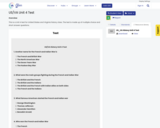
This is a Unit 4 test for United States and Virginia history class. The test is made up of multiple choice and short answer questions.
- Subject:
- American History
- Material Type:
- Assessment
- Author:
- Christopher Hyser
- Date Added:
- 07/27/2022

This is a Unit 4 test for United States and Virginia history class. The test is made up of multiple choice and short answer questions.

In this lesson students will learn how enslaved people used lyrics in songs to help them follow the path to freedom, in the time period before and during the Civil War.

This Story Map Journal explores the issue of slavery from the early days of the republic through John Brown's raid at Harpers Ferry, a prelude to the war between the states. Key questions: Why was slavery not legitimately dealt with during the founding period of the nation? How did the cotton gin help change the economy, culture, and demographics of the country? What correlations can be made between slavery and cotton? What issues arose between the northern and southern states as new territories were acquired in the west? What role did John Brown play in the lead-up to civil war? Contains links to student materials and teacher materials for creating lesson plans.
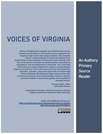
From Voices of Virginiia, edited by Jessica Taylor and Emily Stewart. Lesson Plan 1: Prohibition includes a lesson plan, audio, transcript, historical context, narrator biography, and discussion questions. Objectives (VUS.8): Students will be able to analyze an oral history from the 1920’s and identify the key historical factors (e.g., cars, Prohibition, corruption) the speaker is describing. Students will be able to connect the oral history to the historical context of The Great Gatsby. Students will understand important historical and cultural elements of the 1920s. About Voices of Virginia: http://hdl.handle.net/10919/96912 Feedback welcome: https://bit.ly/VoicesOfVirginia
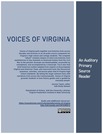
Lesson plan includes an audio clip, transcript, SCIM-C activity script, worksheets, and model student results. Students will be able to describe Massive Resistance in Virginia in response to the Brown v. Board of Education ruling (VUS.13). Requires map of U.S. and artifacts reflecting responses across the U.S. From Voices of Virginia http://hdl.handle.net/10919/96912 Feedback welcome https://bit.ly/VoicesOfVirginia
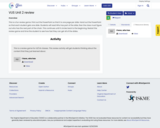
This is a fun review game. Print out the PowerPoint so that it is one page per slide. Hand out the PowerPoint so that each student gets one slide. Students will read Who has part of the slide, then the class must figure out who has the next part of the chain. This continues until it circles back to the beginning. Restart the review game and time the student to see how fast they can get all of the slides.
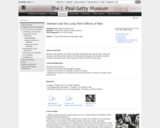
Students will examine an image of civilians affected by the Vietnam War. They will research and discuss the reasons the Vietnam War began, why America became involved, and what some of the long-term effects of this war have been

Views of the National Parks can be used in the classroom in many different ways. Most simply, it can be made available for students to explore on their own. Lesson plan available: Biodiversity Right Outside – Biodiversity is the abundance and variety of life-forms (animals, plants, fungi, and microorganisms) at all levels of organization (ecosystems, species, and genes). In this activity students will learn about biodiversity, the importance of biodiversity to ecosystems, and will conduct their own biodiversity study.

Students will be able to describe Jamestown's relative location at different scales (local, state, regional). They analyze the patterns and effects of Virginia Indian and English colonist settlement between 1607 and 1634. GeoInquiries are short, standards-based inquiry activities for teaching map-based content found in commonly used textbooks.

Investigate the location and population of Virginia's counties, independent cities, towns, and census designed places. Explore the population of Virginia's counties, independent cites through time. Students will distinguish between a county, independent city, and town and describe how population in Virginia has changed over time. GeoInquiries are short, standards-based inquiry activities for teaching map-based content found in commonly used textbooks.

Students describe contributions of Virginians during the Revolutionary War. They analyze the impact of geography on people and opinions toward independence in colonial Virginia. GeoInquiries are short, standards-based inquiry activities for teaching map-based content found in commonly used textbooks.

Students explore ways that everyday Virginians challenged Jim Crow in the Commonwealth by identifying different types of segregation during Jim Crow Virginia and analyze how the Green Book and other Virginians stood up to segregation. GeoInquiries are short, standards-based inquiry activities for teaching map-based content found in commonly used textbooks.

Students learn about Virginia major population centers during three different historical periods. They will practice using grids and cardinal directions to locate places, analyze change over time, and discuss topics such as the census (source of data), distribution of resources in the state, and implications of changes in population for political representation at various levels of
government.

This activity will ask students to locate geographic regions and features on a class map using longitude and latitude measurements. Using the longitude and latitude data, students will be able to visualize geographic features in the actual location in order to analyze the living conditions of various regions.This material is based upon work supported by the National Science Foundation under Grant No. 2010256.Any opinions, findings, and conclusions or recommendations expressed in this material are those of the author(s) and do not necessarily reflect the views of the National Science Foundation.
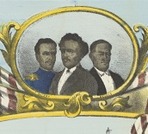
Students will examine the impact of the Emancipation Proclamation on the lives of formerly enslaved people in Virginia. Students will analyze primary and secondary sources to gain context and knowledge about how the Emancipation Proclamation impacted individuals lives directly. Students will develop inquiries and questions about the experiences and history that they learn about through these learning activities.

Students will explore the enduring legacy of the cultures of enslaved people in Virginia by examining primary sources, engaging the research of Black historians, and connecting to their own experiences, interests, and cultures. Students document their thinking in a graphic organizer for formative assessment.
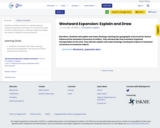
Students will demonstrate an understanding of westward expansion and reform in America from 1801 to 1861 by explaining and creating images that depict the impact of settlers moving westward.
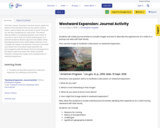
Overview: Lesson Overview
Overview: Lesson seeds are ideas for the standards that can be used to build a lesson. Lesson seeds are not meant to be all-inclusive, nor are they substitutes for instruction. This lesson seed provides a compelling question and a bank of sources to use to drive an inquiry based lesson or a potential Evidence Based Argument Set (EBAS). When developing lessons from these seeds, teachers must consider the needs of all learners. Once you have built your lesson from the lesson seed, teachers are encouraged to post the lesson that has emerged from this lesson seed and share with others. Essential Question: Analyze the causes and consequences of westward expansion.
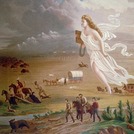
The purpose of this lesson is to help students understand how new technologies, innovations, and government policies led to a new wave of internal and international migration and growth which was positive for some although it resulted in more displacement for American Indians.
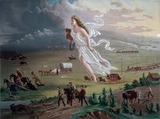
This activity allows for analyis of the painting "American Progress" by John Gast. This activity can be used before Manifest Destiny is taught or after.